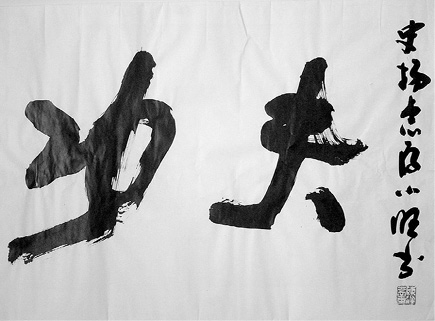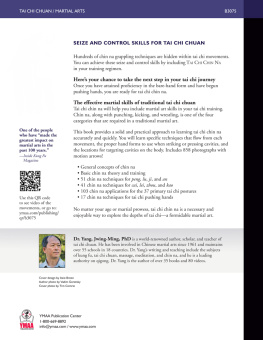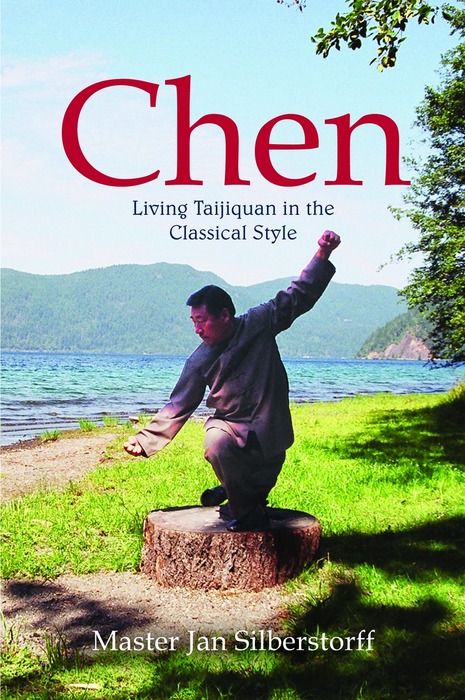Chen
Living Taijiquan in the Classical Style
Master Jan Silberstorff
Translated by Michael Vorwerk
London and Philadelphia
Use of the activities in this book is entirely at the users own risk and the author and the publisher are not liable/do not accept any responsibility for any injury or damage incurred while carrying out or causing anyone to carry out any of the activities described in the book.
This book has been written and published with the greatest possible diligence. All information, however, is given without any warranty. Neither the author nor the publisher will take any responsibility for any damage resulting from the practical instructions given in this book.
All images: WCTAG Archive
Originally published in 2003 in German
by Lotus Verlag
This edition published in 2009
by Singing Dragon
an imprint of
Jessica Kingsley Publishers
73 Collier Street
London N1 9BE, UK
and
400 Market Street, Suite 400
Philadelphia, PA 19106, USA
www.singingdragon.com
Copyright Jan Silberstorff 2009
This translation of Chen is published by arrangement with Singing Dragon, an imprint of Jessica Kingsley Publishers Ltd.
All rights reserved. No part of this publication may be reproduced in any material form (including photocopying or storing it in any medium by electronic means and whether or not transiently or incidentally to some other use of this publication) without the written permission of the copyright owner except in accordance with the provisions of the Copyright, Designs and Patents Act 1988 or under the terms of a licence issued by the Copyright Licensing Agency Ltd, Saffron House, 610 Kirby Street, London EC1N 8TS. Applications for the copyright owners written permission to reproduce any part of this publication should be addressed to the publisher.
Warning: The doing of an unauthorised act in relation to a copyright work may result in both a civil claim for damages and criminal prosecution.
Library of Congress Cataloging in Publication Data
A CIP catalog record for this book is available from the Library of Congress
British Library Cataloguing in Publication Data
A CIP catalogue record for this book is available from the British Library
ISBN 978 1 84819 021 4
eISBN 978 0 85701 005 6
Converted to eBook by EasyEPUB
Acknowledgements
My deepest thanks go to my Shifu Chen Xiaowang who has accepted me not only as his disciple but assimilated me like a son into his family. Deepest thanks also go to Master Shen Xijing who made all of this possible. Without their tuition, there would probably be nothing truly valuable that I could contribute to the subject of Taijiquan.
For contributing their articles I thank Grandmaster Chen Xiaowang, Gerhard Milbrat (also for providing the long weapons for the photos) and Frank Marquardt; Anya Kurka for designing the family tree, and Almut Schmitz and again Frank Marquardt for the formal processing of the manuscript, and Max Fischl for the hours of telephone sessions on translation work. I would also like to thank Holger Neumeyer for the five-level-sketch at the very last minute.
I thank Claudia Mohr for her unfailing dedication in covering for me so that I could find enough time to complete this book. To my parents I feel grateful that they have brought me up in a manner which gave me the freedom to find my own path in life (and thereby to discover Taijiquan).
I wish to dedicate this book to all who have decided to make something real out of their lives, and to those who, despite all the strains and difficulties, have taken the path towards their inner selves. Finally, my dedication is to those who search for or have even found what we call God.

Figure 1 Calligraphy by Grandmaster Chen Xiaowang Gong Fu Great Skills by Great Efforts
Original preface
First, I wish to thank all the women and men among my students who during every seminar have repeatedly asked me to finally complete this book. I feel that without their urging there still wouldnt be any book on Chen-Taijiquan in this form in German and in English. This pristine style of Taijiquan was first established in Germany in 1994. There had been tutors for the Chen-style before, and as Germanys (and by now also Europes) largest autonomous Taijiquan association, we are not the only ones representing Chen-style in Germany, but I think that everybody will agree that it was not until the World Chen Tai Ji Association Germany (WCTAG) was founded that Chen-style became popular in Europe. In fact WCTAG was the first to offer all of Europe a complete and authentic system of the original Taijiquan. It has restored to this art its integrity and its very essence. Even in the PR China Taijiquan is often dealt with just as a gymnastic health programme. Only a few organisations, such as our umbrella association, the Taiji-communitiy in Chenjiagou, are aware of the origins of this marvellous art. WCTAG has gained a reputation when it comes to health maintenance of body and mind, but beyond this it has also been successful in re-establishing Taijiquan among experienced circles of martial artists and philosophers as what it actually is: a highly remarkable and efficient martial art with a health-related and spiritual content. The gratitude for this is mainly owed to my Shifu Chen Xiaowang, who is not only and more than anyone else in the world an absolute master of this art, but who has also found a way to impart it systematically. During the year-long search for a true master, I met various men, all of whom were able to pass me something along my way. To all my teachers, women and men, I feel more than grateful for that. Even so, all the time something had remained somehow incomplete; I felt I was missing a part of Taijiquan, namely, the part that grants this artistry true profoundness. For my Shifu Chen Xiaowang there are no secrets, but instead an incredible openness and an understanding of things in a way I have never experienced before. And he is willing to share this knowledge with all.
I was first allowed to learn about this openness and skill by Master Shen Xijing. When I first met with him, being deeply moved by his mastership, I still found it hard to believe his claim of having learnt from no one else but Chen Xiaowang. This could have been a story told to impress a foreigner, but Master Shen Xijing did not wish to impress. On the contrary, the burden of proof was on my side. As in a Kungfu-film, over six weeks I knocked every morning at his door, being turned away by his wife with varying explanations. After six weeks he eventually opened the door himself. The training began. About six months later and after uninterrupted training, he took me with him to Chenjiagou, the birthplace of Taijiquan. Here I was not only introduced to the family of Grandmaster Chen Xiaowang I was formally engaged to be his first Western disciple. From now on my path was clear: training, training, and training again. Actually this had already been the case before, but now it was no longer just up to me but also up to my new family, because from now on their reputation depended on my progress. Thus, to pay homage to my teachers is a main reason for this book. Without their consent, encouragement and support I would never have had the determination to publish it.









